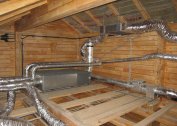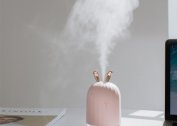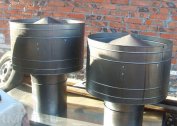In order to minimize the risks of the spread of harmful bacteria and reduce the likelihood of diseases of a viral and infectious nature, disinfection should be carried out regularly in apartments and houses. A correctly conducted procedure contributes not only to the death of harmful microorganisms, but also improves the microclimate in the room as a whole.
Disinfection Methods
Chemical
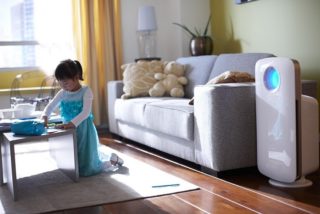 Disinfection is carried out by washing all accessible surfaces with special disinfecting fluids. The composition of these funds includes the following substances: monochloramine, bleach, chlorcin, hexachlor. Under the influence of moisture and light, atomic oxygen and chlorine are released, which has a detrimental effect on viruses and bacteria in the air.
Disinfection is carried out by washing all accessible surfaces with special disinfecting fluids. The composition of these funds includes the following substances: monochloramine, bleach, chlorcin, hexachlor. Under the influence of moisture and light, atomic oxygen and chlorine are released, which has a detrimental effect on viruses and bacteria in the air.
In household chemical stores, you can purchase disinfectants in a liquid state, in the form of a gel, foam, mousse, powder or granules. The most famous chemicals for disinfecting rooms are whiteness, Deactin, Sanita, Gloss, Surzh, Dichlor, Protein and lime.
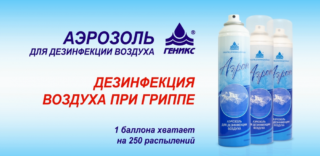 Chemical products should be used strictly according to the instructions attached to them. Disinfection should be carried out in the spring and autumn a couple of times a month. In the winter and summer season, it is enough to rinse all available surfaces with a disinfectant once.
Chemical products should be used strictly according to the instructions attached to them. Disinfection should be carried out in the spring and autumn a couple of times a month. In the winter and summer season, it is enough to rinse all available surfaces with a disinfectant once.
The procedure for applying chemical methods of processing an apartment and a house:
- They put gloves on their hands, a gauze bandage on their faces. To protect the eyes, you can use special glasses. Clothing should fit the body over its entire surface to prevent caustic drops from entering the skin.
- In a bucket or in a basin, a chemical agent is diluted in the required proportion with warm water and mixed well.
- A rag several times pass and thoroughly washed the floors, corners, baseboards. The same means can be used to disinfect window sills, window frames, door handles, tiles, a toilet bowl and other accessible surfaces.
- After the procedure, the room is well ventilated to allow harmful substances to escape.
- Chemical-disinfected surfaces are washed repeatedly with warm, clean water.
UV or quartz lamp as well as a recirculator
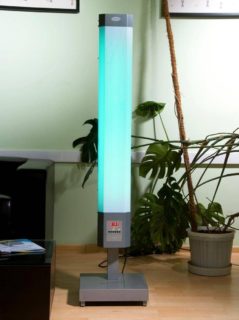 A good way to kill harmful bacteria in the air is to perform quartzing in the apartment. High-power ultraviolet radiation saturates the air with ozone and promotes the propagation of only beneficial microorganisms. To carry out a similar procedure during the spread of viral infections should be at least 15 to 20 minutes a day daily. An ultraviolet lamp can process all toys, souvenirs and other small items.
A good way to kill harmful bacteria in the air is to perform quartzing in the apartment. High-power ultraviolet radiation saturates the air with ozone and promotes the propagation of only beneficial microorganisms. To carry out a similar procedure during the spread of viral infections should be at least 15 to 20 minutes a day daily. An ultraviolet lamp can process all toys, souvenirs and other small items.
When the quartz lamp is on, no people, animals, aquarium fish or indoor plants should be in the room. Sofas, cabinets and other furniture should be covered with a thick blanket for the duration of disinfection. After the end of the procedure, the room treated with radiation should be carefully ventilated.
The recirculator, unlike an ultraviolet lamp, disinfects only the air that enters its closed casing. That is why radiation does not spread throughout the room, and it’s quite safe for people to be in a room with the device turned on. After the decontamination procedure, there is no need to ventilate the apartment. However, do not leave the recirculator on for a long time. It is enough for disinfection to include it for several hours a day during the spread of viruses and bacteria, and several times a week - in a period safe from infections (summer and winter).
Salt lamp
The device looks like a lamp made from a single piece of a natural mineral. Ionization occurs due to the filling of air with negative ions released from the rock salt with which the lamp is coated. The continuous operation of the device normalizes the microclimate in the apartment due to the purification of air from harmful pathogenic microorganisms.
When choosing a salt lamp, you need to focus on its weight. In premises with a large area, massive appliances should be purchased. Please note that for every 10 sq.m. spaces must be used at least 1 kg. salt massif.
It is better to place the salt lamp near the bed to ensure a continuous stream of air with an ionizing composition. The device can be left turned on around the clock, but in the absence of people in the room, for safety reasons, it is better to remove it from the outlet.
Ineffective methods of disinfecting air in an apartment
Folk remedies
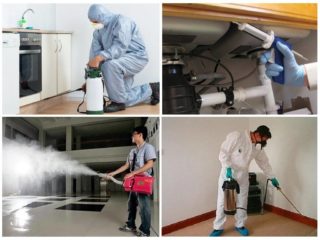 Surface treatment in the apartment and mopping with vinegar or salt does not have a lasting effect. Pathogenic viruses and bacteria die only on surfaces that have been treated with these agents. Microorganisms in the air are not destroyed and continue to settle on the floor and furniture in the apartment.
Surface treatment in the apartment and mopping with vinegar or salt does not have a lasting effect. Pathogenic viruses and bacteria die only on surfaces that have been treated with these agents. Microorganisms in the air are not destroyed and continue to settle on the floor and furniture in the apartment.
The same effect is obtained from the use of other folk remedies, for example, when treating surfaces, walls and window sills with an aqueous solution with the addition of laundry soap, soda, and ammonia. In the summer or winter season, such disinfection is fully justified, but in the cold season it is impossible to count on the destruction of viruses and bacteria by such methods.
Humidifiers
The main task assigned to this device is the humidification of dry air in the room. Despite the fact that the instructions for use indicate a disinfecting effect, in fact disinfection is ineffective.
In humidifiers, clean water must be constantly used, which is placed in a special working case, otherwise there will be no benefit at all. And to fulfill this condition is not so simple. Contamination of the poured liquid occurs almost every hour.
Essential oils
Many sources mention the essential oils of tea tree, fir, pine needles, eucalyptus and lemon as an air disinfectant. It is these oily esters that have the strongest antiseptic effect. But their use in order to disinfect air from harmful microorganisms does not have a lasting positive result.
The fact is that oils tend to evaporate quickly in space. To disinfect the entire apartment, even a small area, you will need a very large amount of ether. Modern oil formulations volatilize and do not have a lasting effect. To at least somehow prolong the disinfecting effect, essential oils are placed in special lamps that evenly release the necessary portion of aroma throughout the apartment. But this procedure is not cheap, in addition, people with frequent inhalation of antiseptic aromas may experience an allergic reaction.
You can disinfect the air in a room in a private house or apartment in various ways. But those that have a long lasting effect (ultraviolet devices, chemicals and salt lamps) are considered the most effective. Simple mopping, albeit with the addition of various non-chemical products, helps get rid of viruses and bacteria in the air only for a short time.
